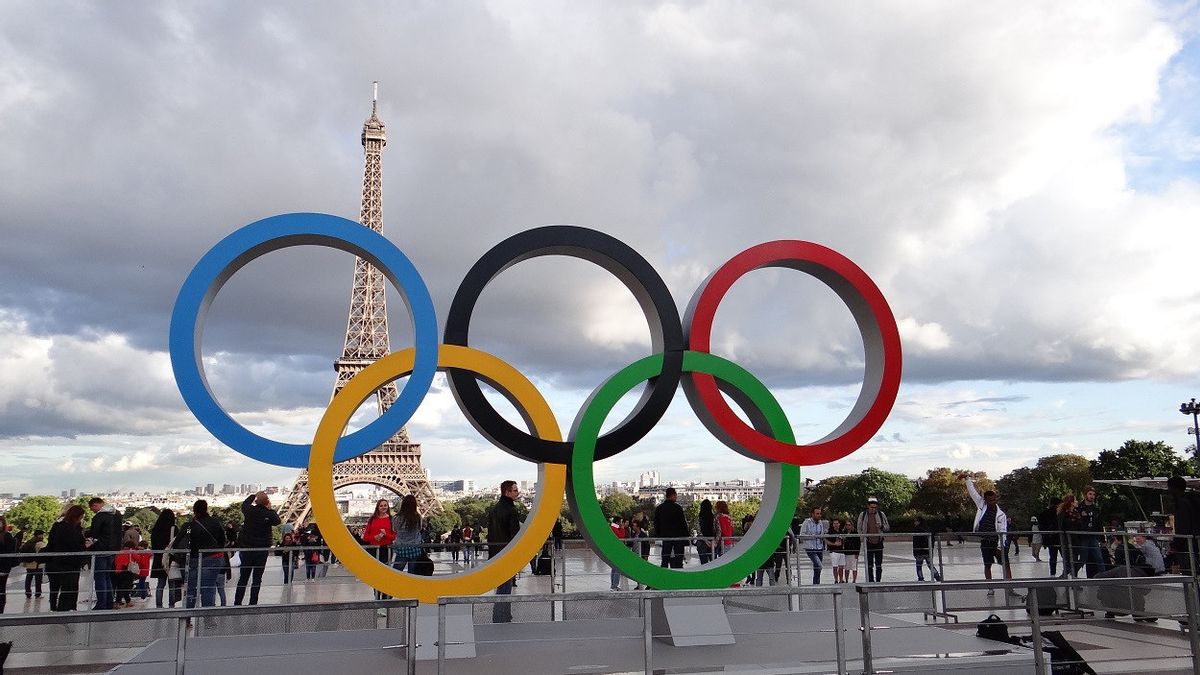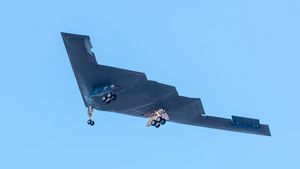JAKARTA - The French government continues to prepare for the success of the 2024 Paris Summer Olympics, starting from beach volleyball with the Eiffel Tower as a backdrop, horse riding in the Gardens of the Palace of Versailles, the opening ceremony on the River Seine, to laser weapons.
Yes, laser weapons capable of shooting and dropping drones from the sky will 'join' in securing the upcoming Olympics. The French Ministry of Armed Forces announced last June that it had ordered a prototype anti-drone laser weapon system, called HELMA-P, to support the 2024 Paris Olympics.
"The HELMA-P system provides a calibrated response to drone threats, from blinding drone observation instruments to neutralizing a mini or micro drone (from 100g to 25kg) by changing the structure, causing it to fall within seconds," the ministry said in a statement. August 3rd.
Changing the structure is a great way of saying burn a hole through any potential drone.
The prototype will also help deepen the military's understanding of its deployment, as the anti-drone campaign is a priority set by the French Ministry of Armed Forces for the period 2019-2025, according to the statement.

Meanwhile, the International Olympic Committee (IOC) told CNN the safety of the Olympics was the responsibility of local governments.
The HELMA-P system can fire powerful laser beams, heating drones to the point where they catch fire or overheating and deadly, according to Jean, chief armaments engineer at the ministry's Directorate General of Armaments, which is responsible for developing and purchasing the weapons.
The ministry declined to give Jean's last name due to security concerns. The drone threat has increased exponentially in recent years, including for major events such as the Olympics, according to Philippe Gros, senior research fellow at the French security and defense think tank Foundation for Strategic Research.
Drones can be used to scan and search specific areas to identify potential target locations. They can also be modified to carry weapons or explosives. Mini drones, targeted by French systems, have played an active role on the front lines in Ukraine.
In addition to the laser unit, the anti-drone system will also include radar and radio frequency sensors to help locate the drone. Once identified, the weapon developed by CILAS, which is owned by French defense giant ArianeGroup, has a firing range of one kilometer, according to Jean.

But using such a powerful weapon in densely populated Paris, where visitors from around the world gather to celebrate the Olympics, poses security concerns.
"An important part of the anti-drone laser program is the safe operation of this weapon," said Jean.
It is up to the teams operating on the ground to determine whether or not they should shoot down the drone.
"This decision will take into account the fact that the downing of a damaged drone can cause some harm," said Jean. Laser weapon systems are also one of the most cost-effective ways to tackle the growing threat of drones in urban areas, according to experts.
"One of the reasons why lasers are attractive is that, compared to interceptor missiles, there are no explosives involved and even if the drone explodes, only the debris will fall. In general, it does less damage," Gros told CNN.

Laser weapons offer other advantages, including precision and low operating costs; they don't need ammunition, which helps explain their increasing popularity among military powers such as the United States, China, France and Britain, according to Gros.
More specifically for drone deterrence, the HELMA-P system and other similar laser weapon systems fill a gap where traditional anti-drone tools struggle to keep up with new developments in drone technology.
"The problem is that drones are becoming more and more autonomous, they can fly many parts of a mission without an operator," Gros said. This means traditional means of signal jamming between drones and operators could become obsolete.
Currently, anti-drone laser weapons still have many weaknesses. For example, bad weather affects its accuracy and efficiency. The industry is still on a learning path, according to Gros.
For tourists visiting Paris in 2024, the Ministry of the Armed Forces assures that its laser guns will not be too distracting to the public.
"The system is quite stealth, it doesn't emit light. Because the laser is actually invisible. It also doesn't make a sound. It's actually a very secret weapon," Jean straightforward.
The English, Chinese, Japanese, Arabic, and French versions are automatically generated by the AI. So there may still be inaccuracies in translating, please always see Indonesian as our main language. (system supported by DigitalSiber.id)









